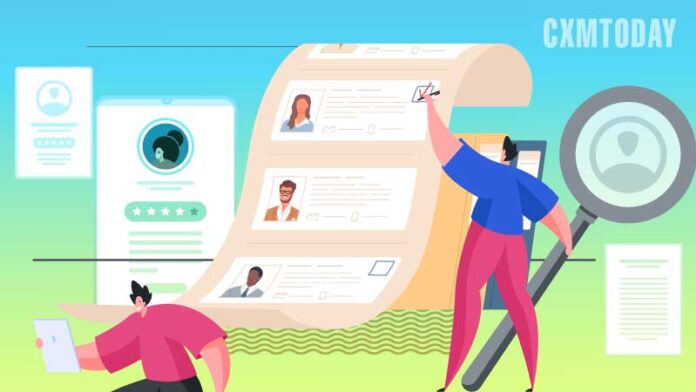Assessment tools are helping brands vet a prospective CX agent’s cognitive ability, language skills, and job knowledge
Companies want to innovate and provide customers with the best experience, so having the best CX team is vital. However, it’s been increasingly difficult for brands to attract and retain top talent for their CX operations.
A recent survey by TELUS International found that 80% of technology leaders have seen the Great Resignation impact their organization. A shrinking support team makes it even harder to deliver the exceptional CX customers expect.
John Monteith, VP and chief of staff of the customer success team at Seismic, said, “Regardless of what product your CX team is supporting, they are responsible for delivering a value-add service to every single customer they encounter, and that service can make (or break) a large component of your company’s reputation.” This emphasizes the fact that creating a great CX workforce is imperative.
Therefore, a company’s HR department must focus on each search when hiring a CX team member. In addition, to precisely evaluate who they’re looking for in a customer service role, the company must meet the candidates’ expectations at every point in the hiring process, whether they get hired or not. Apart from the typical processes of pre-made written assessments, chatbots, and CRMs, companies these days can opt for recruiting assessment tools such as Aspiring Minds, HireSelect, The English Quiz, and HR Avatar. These tools help vet a person’s cognitive ability, language skills, and job knowledge, among other things.
For instance, Aspiring Minds offers various assessment tests for recruiting teams, including cognitive ability, personality, job simulation, sales ability, and more. The assessment also allows a brand to send AI-assisted video interviews to candidates. HR Avatar offers simulation-based pre-employment tests that measure cognitive ability and job knowledge. The tests are animated instead of text-based and simulate real job situations.
More tools such as Saberr also offer a way for an HR team to assess whether a candidate fits into the team culture. With the help of data and analytics, the tool determines whether a candidate has similar values to the existing team and predicts whether that candidate could get along well with each team member or not.
Another assessment tool is McQuaig, a seasoned talent assessment tool that offers candidates personality and cognitive ability tests. Some cognitive abilities that would help in a CX role would be to have a data-driven mindset, software knowledge, relationship building, and good communication skills. The tool lets the recruiter build job profiles to evaluate candidates against or use McQuaig’s vast library to standardize job profiles based on real hiring data.
NICE has found one of the most convenient CX hiring and training solutions. The tool, known as NICE CXone, is AI-powered and makes an entire contact center smarter by analyzing every moment of every interaction to identify behaviors that drive perfect experiences. The platform unifies customer analytics, omnichannel routing, workforce engagement, automation, and AI — all built on an open cloud foundation. It delivers fast onboarding of new employees with embedded AI to keep a brand’s team one step ahead.
NICE’s team also offers tailored education where contact center experts visit a brand’s office and provide insight into different ways every person on the CX team is comfortable with/or wishes to learn. They cover everything from onboarding new agents and employees with foundational training to providing a company with comprehensive skill assessments. They prescribe learning paths for different roles to fit a company’s objectives.
Apart from these tools, brands also need to note when they need to train/hire for customer service factors such as teams reporting stress, metrics sliding, and when a forecasting model starts predicting a breaking point is when a company needs to start finding or training their staff. An overwhelmed customer service team will not perform at their best. When your team struggles to keep up, it’s time to consider adding new members or providing the current team with proper training and newer software.
When hiring new talent, a company needs to be deliberate about diversity and inclusion. Research from Catalyst has found that diversity and inclusion benefit individuals, organizations, teams, and society. So, striving to increase workplace diversity is not an empty slogan — it’s a good business decision. The best candidates will be attracted to the job postings where the employers use gender-neutral and inclusive language when they’re cautious about listing their “must-haves,” and it’s always a good idea to include a company’s diversity plan.
Furthermore, instead of posting vacancies on multiple sites, it’s best to look at specialized job boards first. Some of the customer service communities are constantly surfing websites like Support Driven, Elevate CX, and CX Accelerator. Communities such as We Work can also help reach people globally.
Recruiting and training the right people and assisting them to prevail in their respective roles can be a tedious task for a company, but it is, at last, a massive efficiency multiplier. Each individual that a company trains/hires connects with thousands of a brand’s customers personally, and every one of those interactions changes how that customer feels about the business. So, it merits putting the time and cash into evaluations to truly comprehend who a brand needs and build a detailed and efficient process to find and train them.
If you liked reading this, you might like our other stories
Taking the Self-Service Route
BORIS, a Logistical Nightmare?




